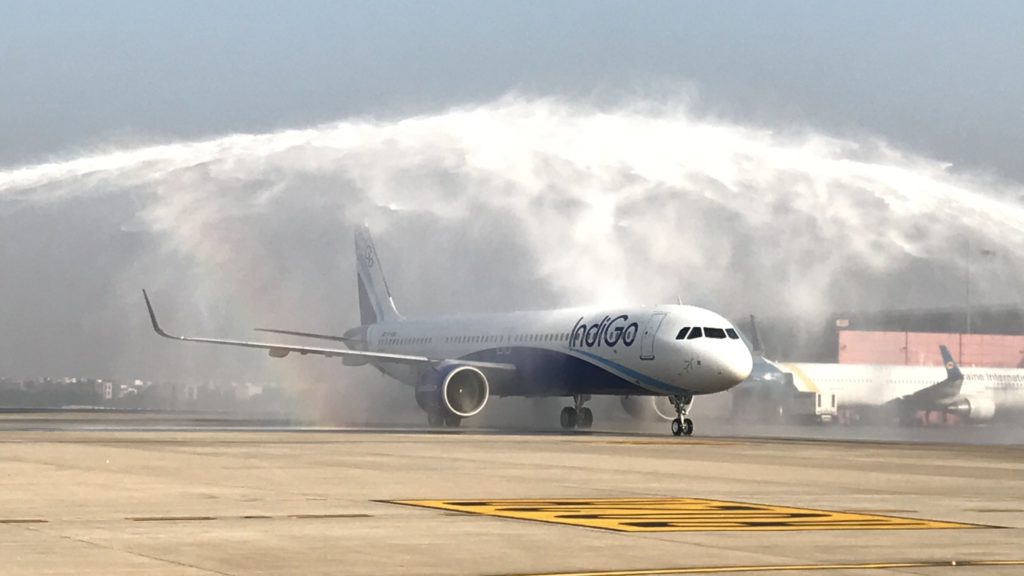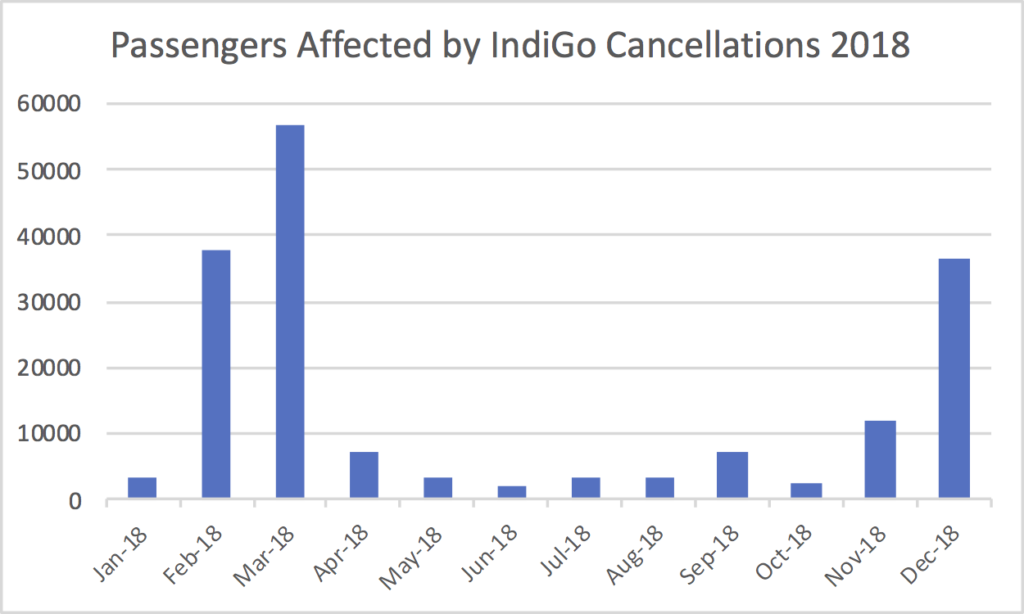Last week, IndiGo had a massive number of cancellations. Subsequent to the IndiGo flight cancellations, the whole issue was blamed on weather and airport shutdowns at first, while a lot of it had to do with the shortage of cockpit crew available to run smooth operations at IndiGo itself.
Unfortunately, IndiGo did not own up to it without prodding. But when I sat down to research for a column of mine, I discovered that these cancellations have been building up for a while, and that the last week’s incidents, and the cancellation of 30 flights through March 30, 2019, are a consequence of a pressure cooker situation inside the airline.

I collected the data from various DGCA reports, to arrive at the number of passengers who were affected by IndiGo’s flight cancellations through 2018. I came to a shocking number of 57% percent of all the passengers who were affected last year being on IndiGo. Here is a look at the chart, however only for IndiGo.

Now, if you look at the February and March 2018 data, that was attributable to the part of their troubles with the A320neo engines. But after running a sort of a reliable operation through the rest of the year, the numbers started to go up again in November 2018, and in December 2018, the airline displaced 36,000 passengers again. The fog was nowhere in sight so these are not attributable to the north Indian fog at any time.
I was around for the CAPA aviation summit in Delhi which lasted through Thursday, and IndiGo’s official line was reproduced by us then. Subsequently, some reporters were able to get IndiGo to speak more freely later, and IndiGo admitted that the flight cancellations were because of the shortage of cockpit crew, where they estimated about 120 foreign captains to join them but only 20 had joined so far. The rest would join by June 2019, the airline said.
For an airline which is inducting one new plane a week on an average, the airline has a severe shortage of captains, and as per many sources, cockpit crew are leaving the airline at a fast clip to join other airlines. A couple of news reports from ETPrime and Business Standard shed light on the issues on hand.
A change of rostering software which IndiGo spent a lot of money on, now started to optimise resource allocation in a way where pilots were gone from their home for days at a length, and this affected their personal life as well. But not just that, the pilots, who would usually be attached to a plane and would use the same equipment all day, let’s say on a BOM-DEL-AMD-HYD-BOM rotation, were now supposed to also switch planes if the software so demanded.
IndiGo also promoted a lot of people, but given these new circumstances, pilot resignation has shot up from 4% to 10%. Given that the new DGCA rules require a one-year notice period for pilots, IndiGo did not find it easy to poach pilots from other airlines anymore. Now, they are hiring abroad and for whosoever decides to join them, it would take three months at the minimum to bring them on to the left seat of the cockpit.
On top of the whole issued, IndiGo has also decided not to put out a public list of cancellations. So there is no way for you to track if your flight got affected if it did.
Bottomline
IndiGo, which was built on on-time performance, has now crucified that promise with their bad planning. Yes, stuff happens, but they’ve majorly dropped the ball here, and instead of apologising, decided to blame it on the weather in the first instance.
If you see fares go up this month or next, you can in part lay that on the feet of IndiGo.
Have you experienced any cancellations with IndiGo over the past months or over the next 45 days or so? What do you think of the handling of the current situation by IndiGo?


Leave a Reply